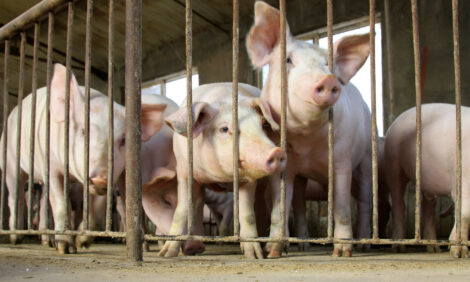



Genesus Global Market Report: Mexico, August 2023
Price fluctuations, strong peso and the need for adaptabilityFluctuations in the Mexican Pork Market: Influences and the need for adaptation
Over the past 10 weeks, the Mexican pork market has witnessed significant fluctuations in liveweight prices. These variations can be attributed to a range of factors, with key influences stemming from domestic demand, imports, and health challenges.
The last report we had highlighted as a beginning to pick up the price, reaching around 29 pesos/kg ($0.78/lb) at the end of May, with increases averaging between 3 and 7% weekly, reaching a ceiling above 37 pesos/kg ($0.98/lb) during the third week of July. However, the last two weeks the price has presented stability, and currently it is at 36.92 pesos/kg. ($0.98/lb), this is an increase of more than 27% since the last report.
Domestic demand has played a pivotal role in shaping pork prices. As the economy rebounded and mobility restrictions eased, the demand for pork protein exhibited noticeable shifts. Periods of increased domestic demand propelled prices upward, while slowdowns in demand led to stabilization or even reductions in prices. This demand volatility has required agile responses from producers to efficiently adjust production levels.
Imports have also directly impacted the price dynamics in the pork market. Changes in the quantities of pork imported from the United States, a major supplier, have influenced the supply and, consequently, local prices. Import reductions have exerted upward price pressure, whereas increases have resulted in the opposite trend. Dependence on imports has underscored the necessity for diversification of sources and greater self-sufficiency in local production.
Furthermore, health challenges such as disease outbreaks like PRRS have exacerbated price fluctuations. These events added to the liquidation of sows in some production systems have caused contractions in production, thereby impacting the available market supply. Biosecurity measures and the implementation of preventative medicine programs have become essential to maintaining herd health and limiting the impact of these diseases on production and subsequently, on prices.
These economic dynamics characterized by domestic demand, imports, and health challenges have created a changing and demanding commercial landscape for participants in the Mexican pork market. The need for adaptation and the implementation of resilient strategies have become imperatives to confront these price fluctuations and shifting market conditions. Producers have had to be flexible in their production, swiftly adjusting quantities, and adapting their business approaches to ensure stability and profitability in an ever-evolving economic environment.
Impact of a strong and appreciated Mexican Peso on Mexican Pork exports
The Mexican peso has appreciated against the US dollar by 19 percent in the last year.
The recent scenario of a strong and appreciated Mexican peso has presented challenges for the Mexican pork industry, particularly in terms of its export revenues. When the Mexican peso gains strength and becomes more valued relative to other currencies, such as the U.S. dollar, several implications arise that can affect the income generated from pork exports.
Firstly, a strong peso tends to make Mexican exports more expensive in foreign markets. This is because, in a stronger currency environment, the cost of Mexican pork products denominated in pesos becomes higher when converted to other currencies. As a result, foreign buyers might find these products relatively less competitive compared to similar offerings from countries with weaker currencies. This can lead to decreased demand for Mexican pork abroad, ultimately impacting export volumes and revenues.
Secondly, an appreciated peso can affect the profitability of pork exports for Mexican producers. When they receive payments in foreign currencies, but their costs are primarily denominated in pesos, the higher exchange rate can lead to reduced earnings when converting foreign revenues back into pesos. This can squeeze profit margins and limit the financial benefits of exporting pork products.
Additionally, a strong peso can influence trade dynamics by potentially encouraging greater imports into Mexico. With the Mexican peso having more purchasing power, importing goods from other countries might become relatively cheaper. This could lead to increased competition from imported pork products, affecting the domestic market and possibly reducing the demand for domestically produced pork.
In conclusion, a strong and appreciated Mexican peso can have a negative impact on the Mexican pork industry's export revenues. The increased cost of Mexican pork products in foreign markets, reduced profitability due to exchange rate effects, and potential challenges posed by increased imports collectively contribute to a less favorable environment for the country's pork exports. Monitoring currency fluctuations and implementing strategic measures to mitigate these challenges become crucial for sustaining a competitive position in the global pork trade.






